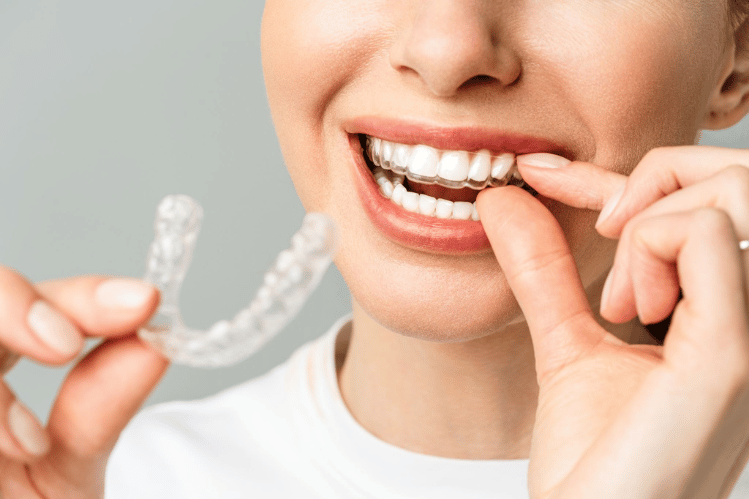The 30-Second Trick For Legacy Orthodontics
The 30-Second Trick For Legacy Orthodontics
Blog Article
How Legacy Orthodontics can Save You Time, Stress, and Money.
Table of ContentsNot known Factual Statements About Legacy Orthodontics See This Report about Legacy OrthodonticsWhat Does Legacy Orthodontics Mean?9 Simple Techniques For Legacy OrthodonticsLegacy Orthodontics for Dummies
In addition, we offer flexible treatment timetables, versatile repayment alternatives and an enjoyable, enjoyable experience.An orthodontist is a dental professional educated to diagnose, stop, and treat teeth and jaw abnormalities. Orthodontists work with individuals of all ages, from children to grownups.
Malocclusion, or misaligned teeth, can cause oral problems, including dental caries, gum condition, and tough or unpleasant chewing. But not everyone is birthed with straight teeth. If you have a bad bite or large areas between your teeth, you may want to get in touch with a dentist concentrating on orthodontic treatment.
Legacy Orthodontics for Dummies
( Picture Credit Rating: DigitalVision/Getty Images) Orthodontists use repaired and removable oral tools, like dental braces, retainers, and bands, to alter the setting of teeth in your mouth. Orthodontic therapy is for oral abnormalities, including: Uneven teethBite troubles, like an overbite or an underbiteCrowded teeth or teeth that are also much apartJaw misalignmentThe objective of orthodontic treatment is to improve your bite.
While you could think of orthodontists as generally for kids or teens that need braces, they can deal with oral issues at any kind of age. Orthodontists attend university, dental school, and orthodontic school.
, yet not all dental professionals are orthodontists. They concentrate on two locations: Exactly how to correctly and safely relocate teeth Just how to correctly direct advancement in the teeth, jaw, and faceOnce an orthodontist has finished training, they have the option to become board accredited.
Legacy Orthodontics Things To Know Before You Get This
Misalignment, or malocclusion, is one of the most typical factor people see an orthodontist. It is hereditary and is the outcome of dimension distinctions between the upper and reduced jaw or in between the jaw and teeth. Malocclusion leads to tooth congestion, an askew jaw, or irregular bite patterns. Malocclusion is typically treated with: Your orthodontist attaches steel, ceramic, or plastic square bonds to your teeth.
If you have only small malocclusion, you might be able to make use of clear braces, called aligners, rather than conventional dental braces (https://sitereport.netcraft.com/?url=https://www.legacyortho.com). Some individuals need a headgear to aid move teeth right into line with pressure from outside the mouth. After braces or aligners, you'll need to use a retainer. A retainer is a custom device that keeps your teeth in area.
They can develop added room in the mouth without having to pull teeth. Orthodontists make use of wires, medical screws, or plates to sustain your jaw bone.
You might require to see an orthodontist if you have: Crowding or otherwise sufficient area for all of your teethOverbite, when your upper teeth come over your bottom teethUnderbite, when your bottom teeth are also much forwardSpacing or problems with gapsCrossbite, which is when your upper teeth fit behind your base teeth when your mouth is closedOpen bite or an upright gap between your front base and upper teethMisplaced midline, when the facility of your base and upper teeth do not line up Correcting resource a dental malocclusion can: Make biting, eating, and speaking easierImprove the proportion of our face and your general appearanceEase discomfort from temporomandibular joint disordersDifferent your teeth and make them simpler to clean up, assisting prevent dental cavity or dental caries It's frequently a dental practitioner that initially notifications misaligned teeth throughout a routine examination.
The Ultimate Guide To Legacy Orthodontics

Throughout your very first orthodontic examination, you'll likely have: An oral examPhotos taken of your face and smileDental X-raysPanoramic (360 degree) X-rays of your face and headImpressions to develop molds of your teethThese tests will assist your orthodontist understand just how to proceed with your therapy. orthodontist. An orthodontist is a dental professional that's had training to treat your teeth and jaw
Orthodontists might perform surgical treatment, exams,X-rays,and even more to aid you acquire a more comfortable, much healthier smile. An orthodontist is concentrated on your bite, so something like a cracked tooth would be managed by a dental expert. Orthodontists are dental professionals but not all dental experts are orthodontists. Orthodontists are concentrated on your bite, or the method your teeth fit together, and the straightness of your teeth.
Ever before asked yourself how celebrities constantly seem to have perfectly straightened teeth? Orthodontists are oral professionals who concentrate on correcting irregularities in the teeth and jaws.
Not known Factual Statements About Legacy Orthodontics

, orthodontists have a varied toolkit at their disposal. These tried-and-true braces use a system of braces bound to the teeth and attached by cords.
Clear aligners, like Invisalign, are a preferred choice for individuals seeking a much more very discreet therapy option. These detachable trays are tailor-made to considerably change the teeth's setting. Headgear might be utilized together with braces or aligners to apply added targeted pressures, especially for correcting jaw discrepancies. In cases of narrow jaws, palatal expanders can be made use of to develop space for proper tooth placement.
Report this page